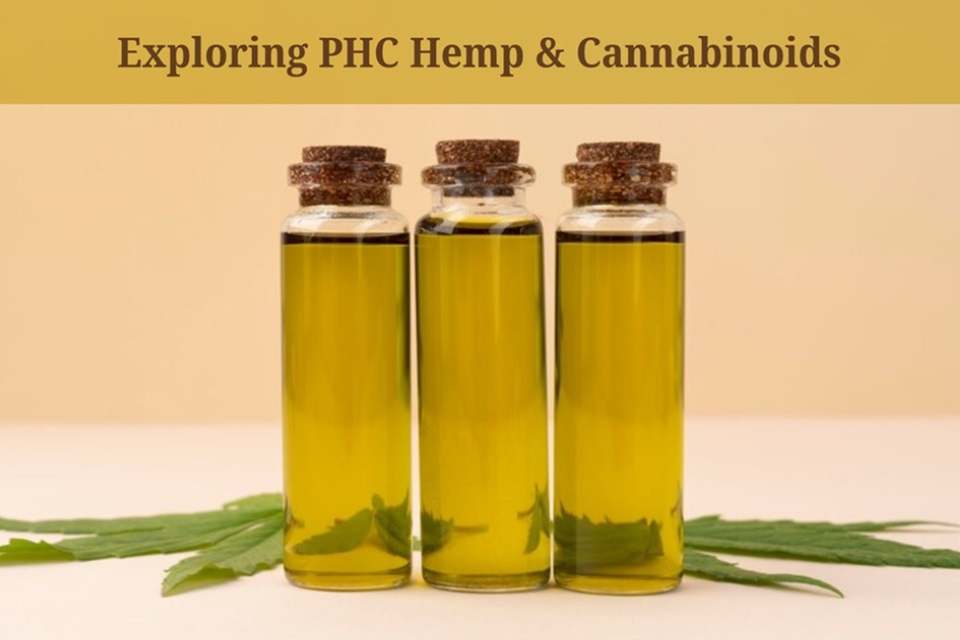Understanding PHC Hemp & Cannabinoids: A Comprehensive Guide
In recent years, the interest in PHC hemp and cannabinoids has surged, driven by their potential health benefits and therapeutic properties. PHC, short for “phytocannabinoid,” refers to cannabinoids derived from plants, particularly hemp plants. These compounds interact with the body’s endocannabinoid system, influencing various physiological processes.
What Are Phytocannabinoids (PHCs)?
Phytocannabinoids are natural compounds found in plants, with hemp being a rich source. These cannabinoids are structurally similar to endocannabinoids, which are produced naturally in the human body. The most well-known phytocannabinoids include CBD (cannabidiol) and THC (tetrahydrocannabinol). While THC is psychoactive and produces a “high,” CBD is non-psychoactive and is celebrated for its potential therapeutic effects.
Benefits Of PHC Hemp
PHC hemp, specifically CBD, has garnered attention for its potential health benefits:
- Pain Relief: CBD has shown promise in alleviating chronic pain by interacting with neurotransmitters and reducing inflammation.
- Anxiety and Depression: Many users report a reduction in anxiety and depression symptoms with regular CBD use, possibly due to its effect on serotonin receptors.
- Neuroprotective Properties: Studies suggest that cannabinoids may protect the brain from damage and improve neurological function.
- Skin Health: CBD is increasingly used in skincare products due to its anti-inflammatory properties, potentially helping with conditions like acne and eczema.
Types Of Cannabinoids In PHC Hemp
Besides CBD and THC, PHC hemp contains various other cannabinoids, each with unique effects:
- CBG (Cannabigerol): Known as the “mother cannabinoid,” CBG is the precursor to CBD and THC. It shows potential in treating glaucoma and has anti-inflammatory properties.
- CBC (Cannabichromene): CBC is non-psychoactive and may contribute to pain relief and anti-inflammatory effects.
- THCV (Tetrahydrocannabivarin): THCV may suppress appetite and shows potential in managing diabetes.
Legal Status & Regulations
The legal status of PHC hemp and cannabinoids varies across different countries. In the United States, the 2018 Farm Bill legalized CBD products derived from hemp with lower than 0.3% THC. However, regulations are continually changing, influencing how these products are produced, sold, and used.
How To Use PHC Hemp Products?
PHC hemp products come in various forms, including:
- CBD Oil: Sublingual oils that offer quick absorption.
- Edibles: Gummies, chocolates, and capsules for convenient dosing.
- Topicals: Creams, lotions, and balms for localized relief.
- Vaping Products: Inhalable options for fast-acting effects.
Conclusion
As research into PHC hemp and cannabinoids expands, so does our understanding of their potential benefits. Whether you’re considering CBD for pain relief, anxiety management, or overall wellness, it’s essential to choose high-quality products and consult with a healthcare provider, especially if you’re new to cannabinoids or have existing medical conditions.
Exploring PHC hemp and its cannabinoids opens up a world of natural alternatives for health and well-being. Stay informed, stay curious, and discover how these plant-derived compounds could enhance your life.
FAQs
What are phytocannabinoids (PHCs)?
Phytocannabinoids are natural compounds found in plants, particularly hemp. They interact with the body’s endocannabinoid system, influencing processes like pain sensation, mood regulation, and immune response.
Is CBD legal everywhere?
The legal status of CBD varies globally. In the United States, hemp-derived CBD containing below than 0.3% THC was legalized through the 2018 Farm Bill. However, regulations vary by country, influencing production, sales, and usage.
How can PHC hemp products be used?
PHC hemp products come in various forms, including CBD oils for sublingual absorption, edibles like gummies and capsules, topical creams and lotions for localized relief, and vaping products for quick effects. Choosing the right product depends on individual preferences and health needs.





